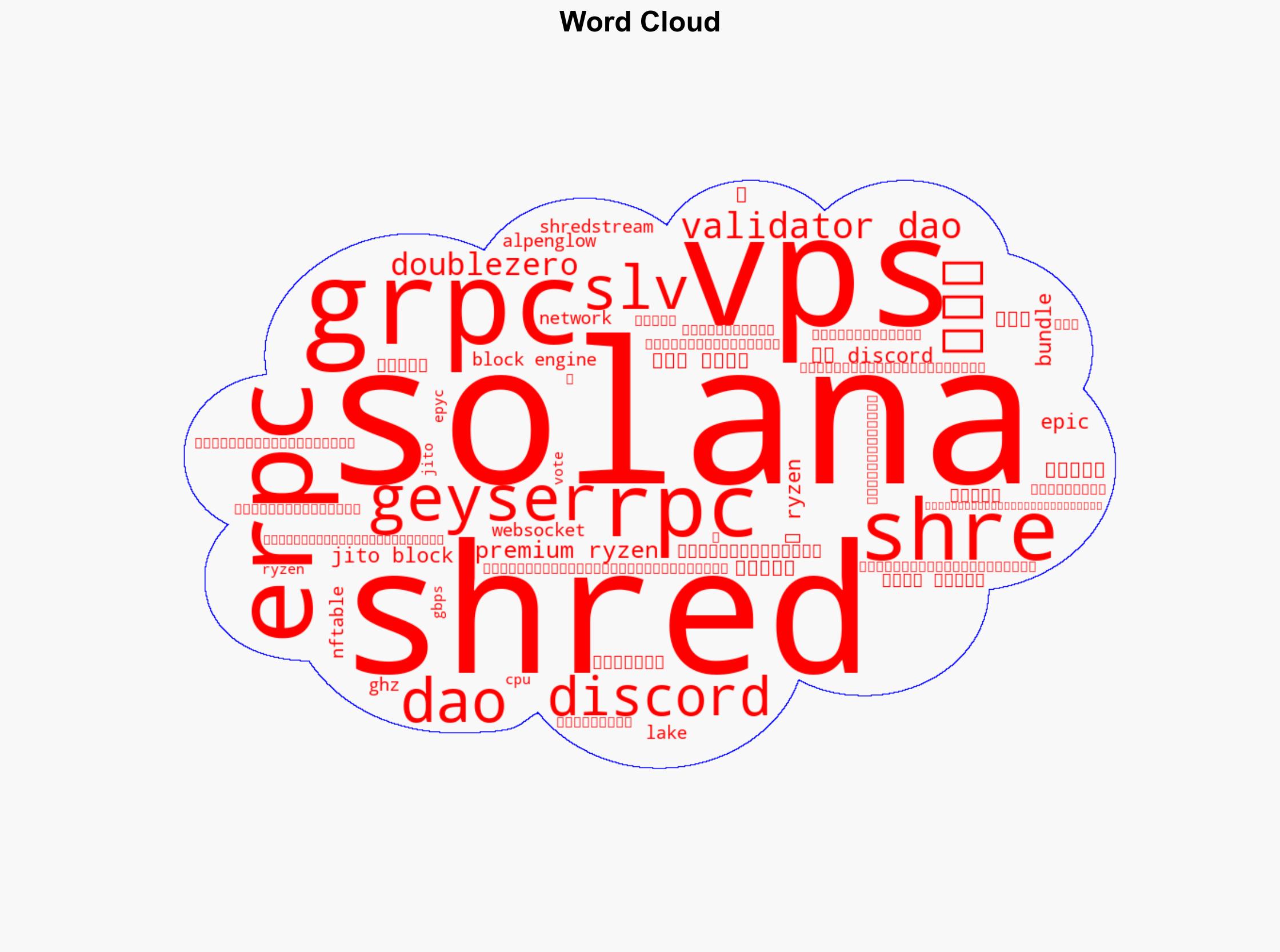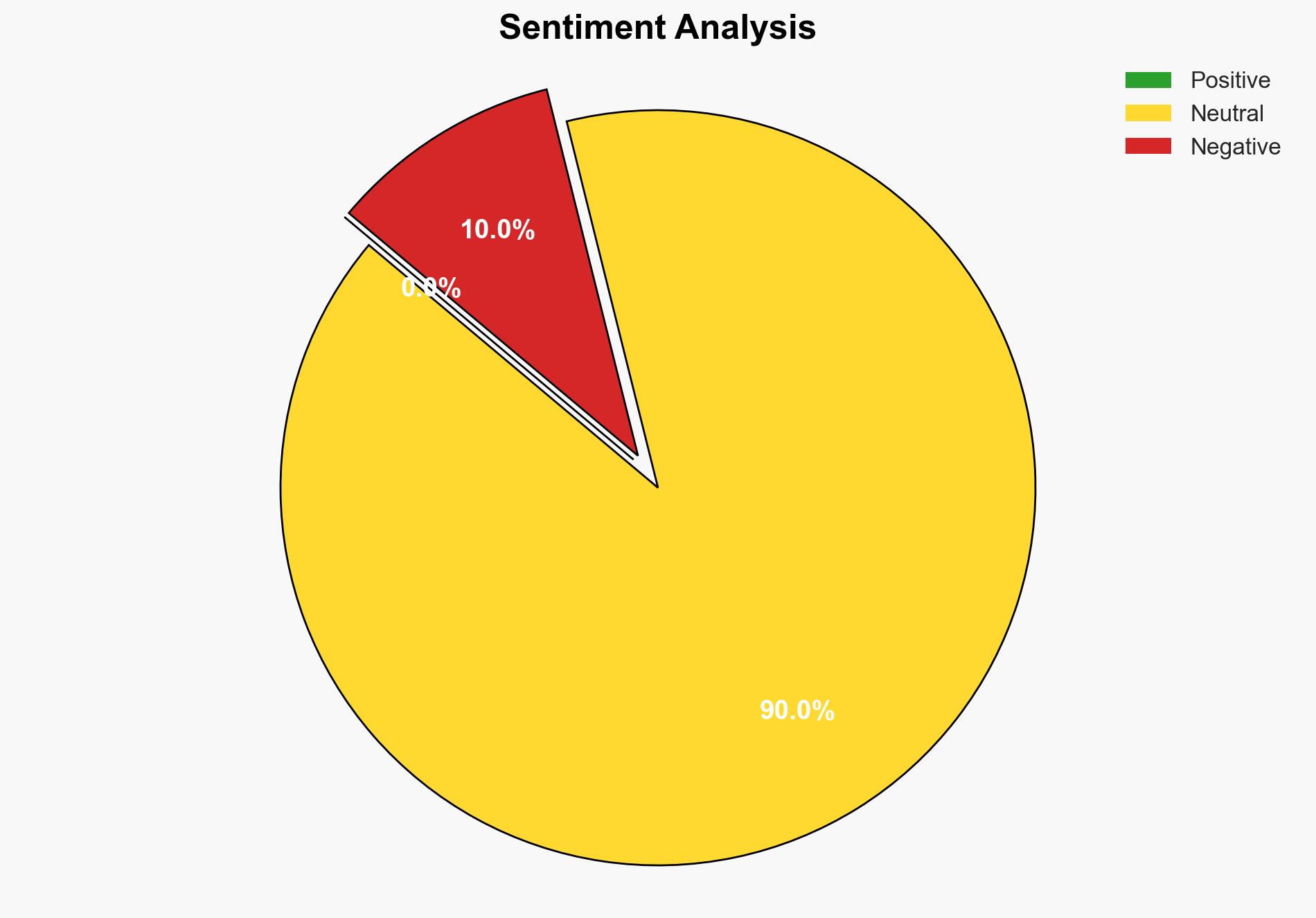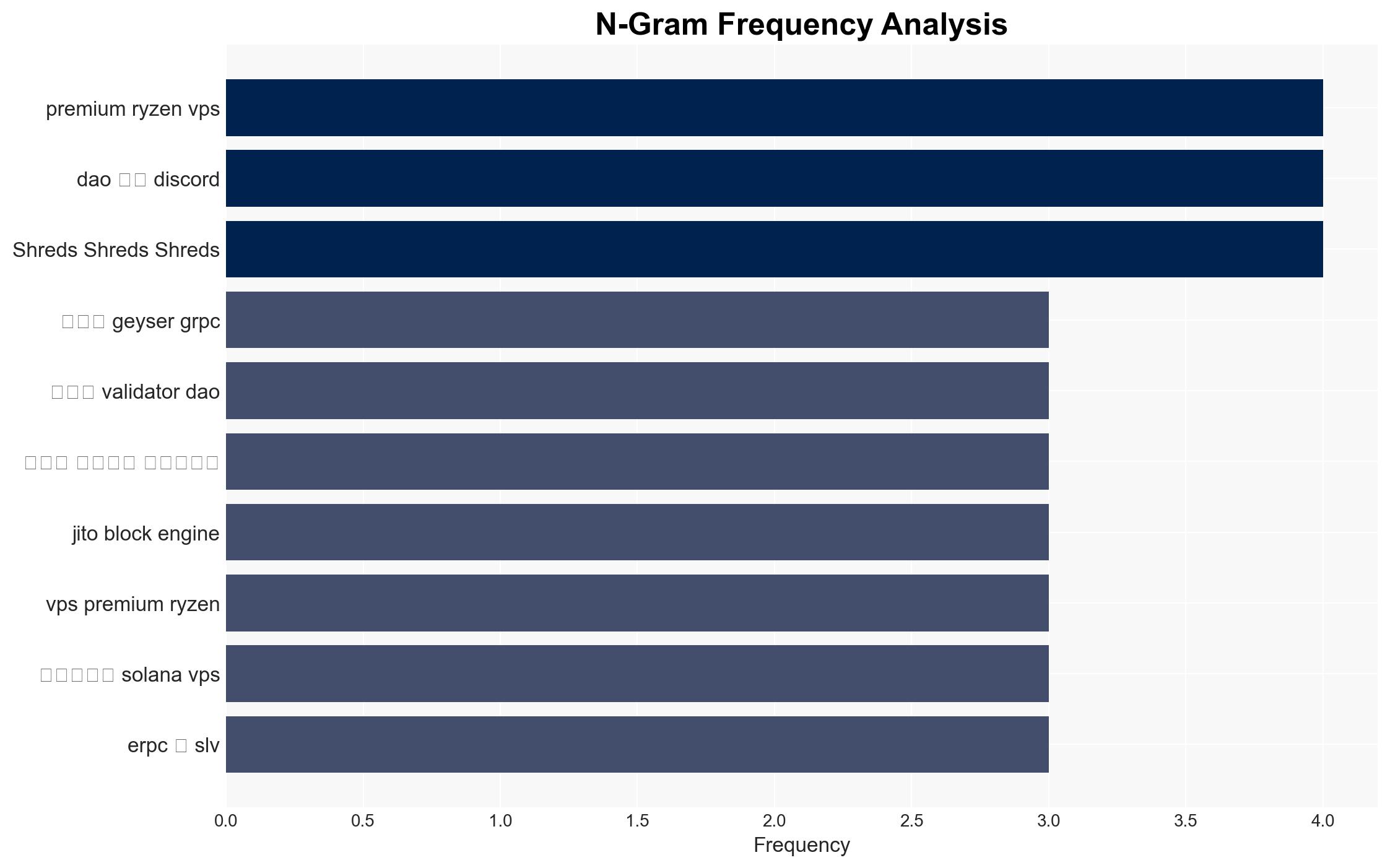ERPC Solana ShredsgRPC – Prtimes.jp
Published on: 2025-11-17
AI-powered OSINT brief from verified open sources. Automated NLP signal extraction with human verification. See our Methodology and Why WorldWideWatchers.
Intelligence Report: Strategic Analysis of Solana ShredsgRPC Developments
1. BLUF (Bottom Line Up Front)
The recent enhancements in Solana’s ShredsgRPC infrastructure are likely to significantly improve network performance and security, addressing previous vulnerabilities. The most supported hypothesis is that these upgrades are primarily aimed at mitigating increased attack traffic and optimizing network efficiency. Confidence Level: Moderate. Recommended action includes monitoring the impact of these changes on network performance and security metrics, and preparing contingency plans for potential new vulnerabilities.
2. Competing Hypotheses
Hypothesis 1: The primary motivation behind the Solana ShredsgRPC upgrades is to enhance network security against rising attack traffic and improve performance efficiency.
Hypothesis 2: The upgrades are primarily driven by competitive pressures to maintain Solana’s market position by offering superior network performance and reliability.
The first hypothesis is more likely due to the explicit mention of attack traffic mitigation and performance tuning in the source text. The emphasis on security measures and performance improvements suggests a response to external threats rather than purely competitive positioning.
3. Key Assumptions and Red Flags
Assumptions:
– The upgrades will effectively mitigate attack traffic and improve performance.
– Solana’s infrastructure can handle the increased complexity without introducing new vulnerabilities.
Red Flags:
– Lack of detailed technical specifications on how the upgrades address specific vulnerabilities.
– Potential over-reliance on new technologies that have not been extensively tested in real-world scenarios.
4. Implications and Strategic Risks
The enhancements could lead to a temporary lull in attack attempts, but adversaries may adapt and develop new strategies. If the upgrades fail to deliver the expected improvements, Solana’s reputation and user trust could be at risk. Additionally, other blockchain networks may feel pressured to implement similar upgrades, potentially leading to a broader arms race in blockchain security and performance enhancements.
5. Recommendations and Outlook
- Continuously monitor the network for new vulnerabilities and performance metrics post-upgrade.
- Engage with cybersecurity experts to validate the effectiveness of the new security measures.
- Best-case scenario: The upgrades lead to a significant reduction in attack incidents and improved network performance.
- Worst-case scenario: The upgrades introduce new vulnerabilities, leading to increased attack incidents.
- Most-likely scenario: The upgrades provide moderate improvements in security and performance, with some residual vulnerabilities remaining.
6. Key Individuals and Entities
Entities: Solana, Validator DAO, Epic DAO
7. Thematic Tags
Cybersecurity, Blockchain, Network Performance, Solana
Structured Analytic Techniques Applied
- Adversarial Threat Simulation: Model and simulate actions of cyber adversaries to anticipate vulnerabilities and improve resilience.
- Indicators Development: Detect and monitor behavioral or technical anomalies across systems for early threat detection.
- Bayesian Scenario Modeling: Quantify uncertainty and predict cyberattack pathways using probabilistic inference.
- Network Influence Mapping: Map influence relationships to assess actor impact.
Explore more:
Cybersecurity Briefs ·
Daily Summary ·
Support us
·





